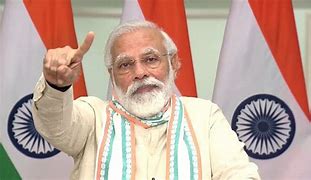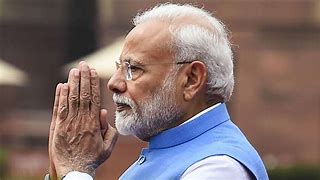Feature
Accords on terrorism to space cooperation set stage for Modi’s US visit

Washington: India and US have set the stage for Prime Minister Narendra Modi’s third summit with President Barack Obama with agreements to expand counter-terrorism cooperation to support for India’s permanent membership of the Security Council.
Indian External Affairs Minister Sushma Swaraj Tuesday listed six key takeaways from the first US-India Strategic and Commercial Dialogue that she and US Secretary of State John Kerry co-chaired.
Minister of State for Commerce and Industry Nirmala Sitharaman and US Secretary of Commerce Penny Pritzker led the dialogue’s commercial segment aimed at raising India-US bilateral trade five fold to $500 million.
A separate Joint Declaration on Combating Terrorism recognised the threat posed by Lashkar-e-Taeba, Jaish-e-Mohammad, D Company, and the Haqqani Network, operating from safe havens in the region and the need for Pakistan to bring perpetrators of 2008 Mumbai attacks to justice.
In a joint statement the US reiterated its support for India’s membership in four major global non-proliferation export control regimes, including the Nuclear Suppliers Group (NSG).
US also reaffirmed its support for a reformed UN Security Council with India as a permanent member.
On climate change, India and US agreed to work together and with other countries to conclude an ambitious climate agreement in Paris in December 2015.
Following the launch of a new Space Security Dialogue in March 2015, they renewed the US-India Technology Safeguards Agreement to facilitate the launch of US satellite components on Indian space launch vehicles.
On cyber issues, India and US supported an open, inclusive, transparent, and multi-stakeholder system of internet governance and commended the resumption of the US-India Cyber Dialogue.
They also pledged to continue high level consultations on Afghanistan, making clear the enduring commitment of India and the US to the Afghan people.
India and US also expressed support for the nuclear deal between Iran and six world powers led by the US and called for its timely and thorough implementation by Tehran.
They also agreed to launch new High Level Consultations led by the US Deputy Secretary of State and India’s Foreign Secretary.
India’s announcement to hold a regional Pravasi Bhartiya Divas (PBD) in Los Angeles in November 2015 to further increase people-to-people contacts between the two countries was welcomed.
They noted that their relations have never been stronger – “as reflected by unprecedented strategic cooperation, record levels of bilateral trade and investment, and more than two million annual visits between their citizens, students, and entrepreneurs.”
India and US also pledged to build on this momentum by pursuing new areas of collaboration, leveraging the talents of government and the private sector.
The joint statement also emphasised the importance of building commercial ties to drive the US-India partnership forward and agreed to launch an innovation forum in 2016.
This would provide platform for US and Indian entrepreneurs to share best practices in promoting a culture of innovation and the creation of sister innovation hubs.
A joint work stream on Ease of Doing Business was launched with an agreement to continue exchanges of information and best practices on cross- border trade.
India and US also welcomed efforts toward the removal of barriers that impact their participation in global supply chains and sustained implementation of trade facilitation measures.
Responding to India’s request for support in developing evaluation techniques for Massive Open Online Courses and Distance Education Courses, the US agreed to facilitate discussions with US industry experts specialising in this subject.
On Defence and Security Cooperation, they expressed satisfaction with progress on Defence Technology and Trade Initiative pathfinder projects, including the establishment of the Working Groups on Aircraft Carrier Technology and Jet Engine, and the growing cooperation between US and Indian defense industries through the “Make in India” initiative.
On Energy and Environment, the joint statement said they looked forward to the early signing of a new five year Memorandum of Understanding on Energy Security, Clean Energy and Climate Change.
They also announced launch of a new Fulbright-India Climate Fellowship for capacity building in climate research between India’s Department of Science and Technology and the US Department of State.
The next round of the dialogue will be held in India in 2016.
Entertainment
Meghalaya Reserves Legalized Gambling and Sports Betting for Tourists

The State Scores Extra High on Gaming-Friendly Industry Index
Meghalaya scored 92.85 out of 100 possible points in a Gaming Industry Index and proved to be India’s most gaming-friendly state following its recent profound legislation changes over the field allowing land-based and online gaming, including games of chance, under a licensing regime.
The index by the UK India Business Council (UKIBC) uses a scale of 0 to 100 to measure the level of legalisation on gambling and betting achieved by a state based on the scores over a set of seven different games – lottery, horse racing, betting on sports, poker, rummy, casino and fantasy sports
Starting from February last year, Meghalaya became the third state in India’s northeast to legalise gambling and betting after Sikkim and Nagaland. After consultations with the UKIBC, the state proceeded with the adoption of the Meghalaya Regulation of Gaming Act, 2021 and the nullification of the Meghalaya Prevention of Gambling Act, 1970. Subsequently in December, the Meghalaya Regulation of Gaming Rules, 2021 were notified and came into force.
All for the Tourists
The move to legalise and license various forms of offline and online betting and gambling in Meghalaya is aimed at boosting tourism and creating jobs, and altogether raising taxation revenues for the northeastern state. At the same time, the opportunities to bet and gamble legally will be reserved only for tourists and visitors.
“We came out with a Gaming Act and subsequently framed the Regulation of Gaming Rules, 2021. The government will accordingly issue licenses to operate games of skill and chance, both online and offline,” said James P. K. Sangma, Meghalaya State Law and Taxation Minister speaking in the capital city of Shillong. “But the legalized gambling and gaming will only be for tourists and not residents of Meghalaya,” he continued.
To be allowed to play, tourists and people visiting the state for work or business purposes will have to prove their non-resident status by presenting appropriate documents, in a process similar to a bank KYC (Know Your Customer) procedure.
Meghalaya Reaches Out to a Vast Market
With 140 millions of people in India estimated to bet regularly on sports, and a total of 370 million desi bettors around prominent sporting events, as per data from one of the latest reports by Esse N Videri, Meghalaya is set to reach out and take a piece of a vast market.
Estimates on the financial value of India’s sports betting market, combined across all types of offline channels and online sports and cricket predictions and betting platforms, speak about amounts between $130 and $150 billion (roughly between ₹9.7 and ₹11.5 lakh crore).
Andhra Pradesh, Telangana and Delhi are shown to deliver the highest number of bettors and Meghalaya can count on substantial tourists flow from their betting circles. The sports betting communities of Karnataka, Maharashtra, Uttar Pradesh and Haryana are also not to be underestimated.
Among the sports, cricket is most popular, registering 68 percent of the total bet count analyzed by Esse N Videri. Football takes second position with 11 percent of the bets, followed by betting on FIFA at 7 percent and on eCricket at 5 percent. The last position in the Top 5 of popular sports for betting in India is taken by tennis with 3 percent of the bet count.
Local Citizens will Still have Their Teer Betting
Meghalaya residents will still be permitted to participate in teer betting over arrow-shooting results. Teer is a traditional method of gambling, somewhat similar to a lottery draw, and held under the rules of the Meghalaya Regulation of the Game of Arrow Shooting and the Sale of Teer Tickets Act, 2018.
Teer includes bettors wagering on the number of arrows that reach the target which is placed about 50 meters away from a team of 20 archers positioned in a semicircle.
The archers shoot volleys of arrows at the target for ten minutes, and players place their bets choosing a number between 0 and 99 trying to guess the last two digits of the number of arrows that successfully pierce the target.
If, for example, the number of hits is 256, anyone who has bet on 56 wins an amount eight times bigger than their wager.























